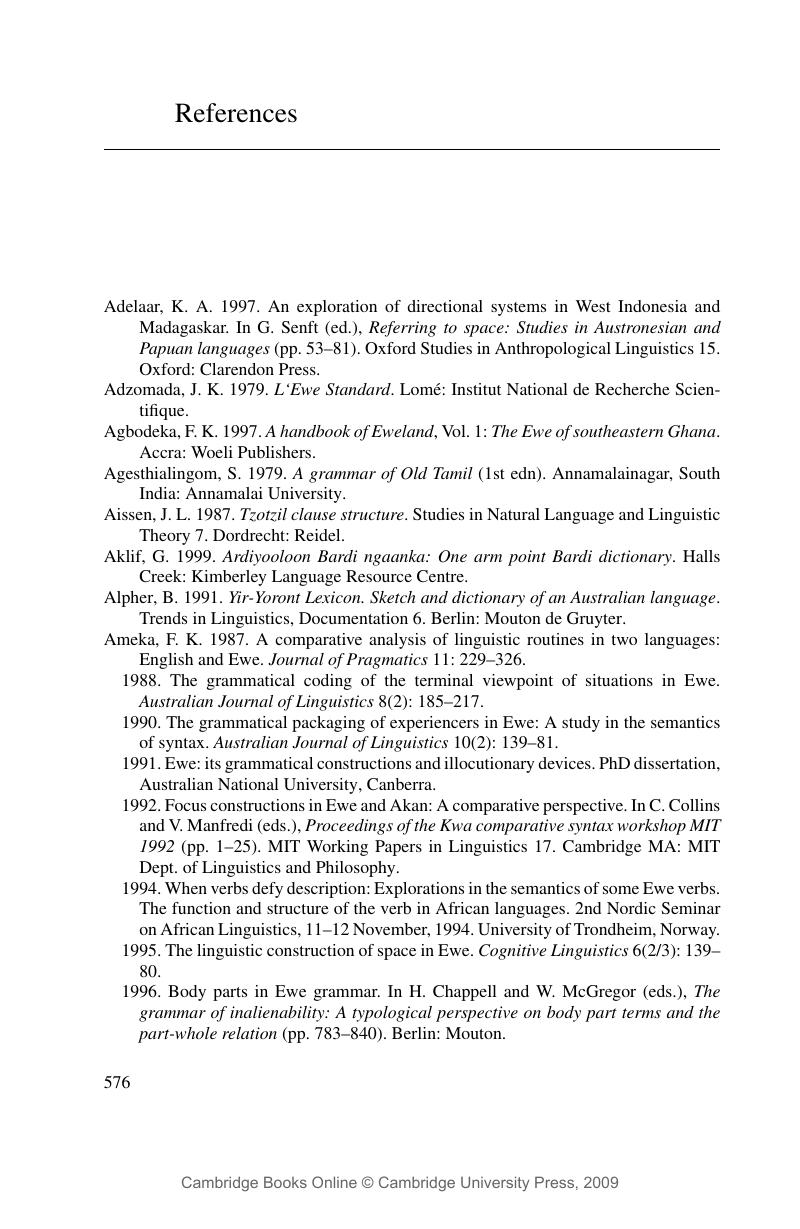Book contents
- Frontmatter
- Contents
- List of figures
- List of tables
- List of contributors
- Preface
- 1 The background to the study of the language of space
- 2 Towards an Arrernte grammar of space
- 3 Sketch of a Jaminjung grammar of space
- 4 Prolegomenon to a Warrwa grammar of space
- 5 The language of space in Yélî Dnye
- 6 Prolegomena to a Kilivila grammar of space
- 7 A sketch of the grammar of space in Tzeltal
- 8 Spatial reference in Yukatek Maya: a survey
- 9 Approaching space in Tiriyó grammar
- 10 Elements of the grammar of space in Ewe
- 11 Spatial language in Tamil
- 12 A grammar of space in Japanese
- 13 Some properties of spatial description in Dutch
- 14 Patterns in the data: towards a semantic typology of spatial description
- Appendices
- References
- Author index
- Language/Language family index
- Subject index
- References
References
Published online by Cambridge University Press: 22 September 2009
- Frontmatter
- Contents
- List of figures
- List of tables
- List of contributors
- Preface
- 1 The background to the study of the language of space
- 2 Towards an Arrernte grammar of space
- 3 Sketch of a Jaminjung grammar of space
- 4 Prolegomenon to a Warrwa grammar of space
- 5 The language of space in Yélî Dnye
- 6 Prolegomena to a Kilivila grammar of space
- 7 A sketch of the grammar of space in Tzeltal
- 8 Spatial reference in Yukatek Maya: a survey
- 9 Approaching space in Tiriyó grammar
- 10 Elements of the grammar of space in Ewe
- 11 Spatial language in Tamil
- 12 A grammar of space in Japanese
- 13 Some properties of spatial description in Dutch
- 14 Patterns in the data: towards a semantic typology of spatial description
- Appendices
- References
- Author index
- Language/Language family index
- Subject index
- References
Summary

Information
- Type
- Chapter
- Information
- Grammars of SpaceExplorations in Cognitive Diversity, pp. 576 - 599Publisher: Cambridge University PressPrint publication year: 2006
